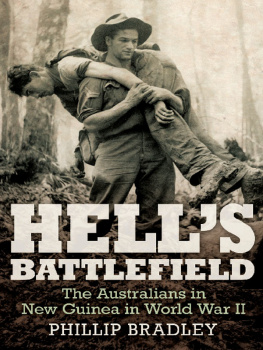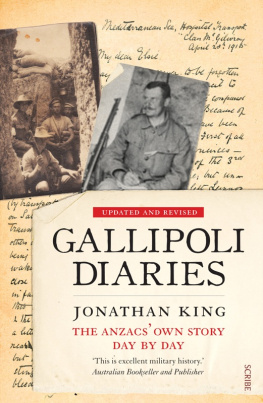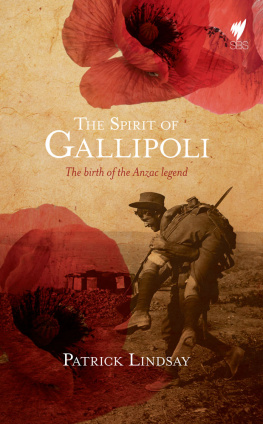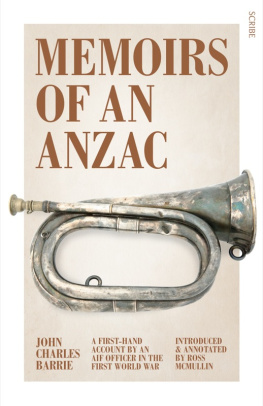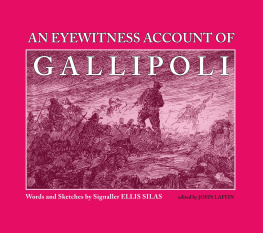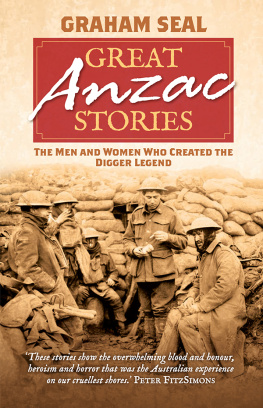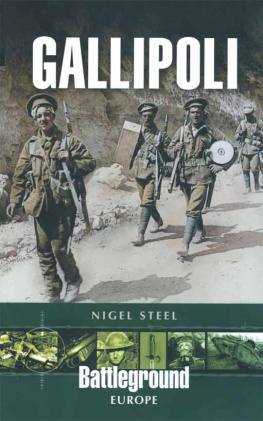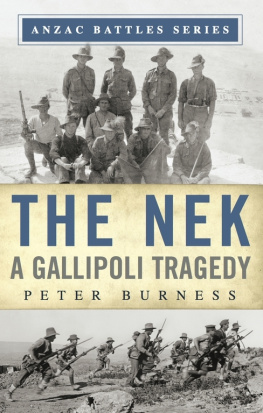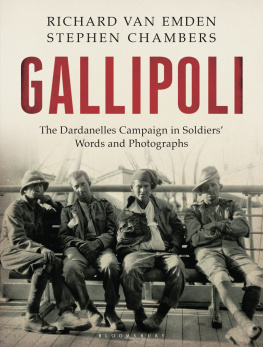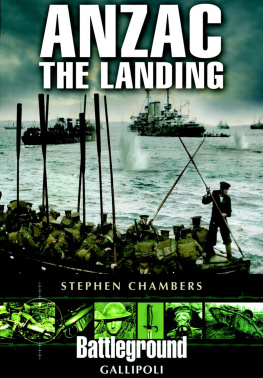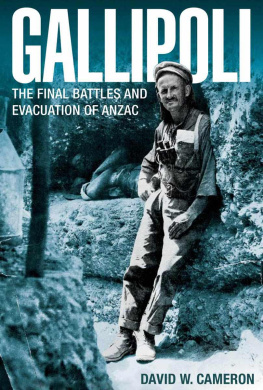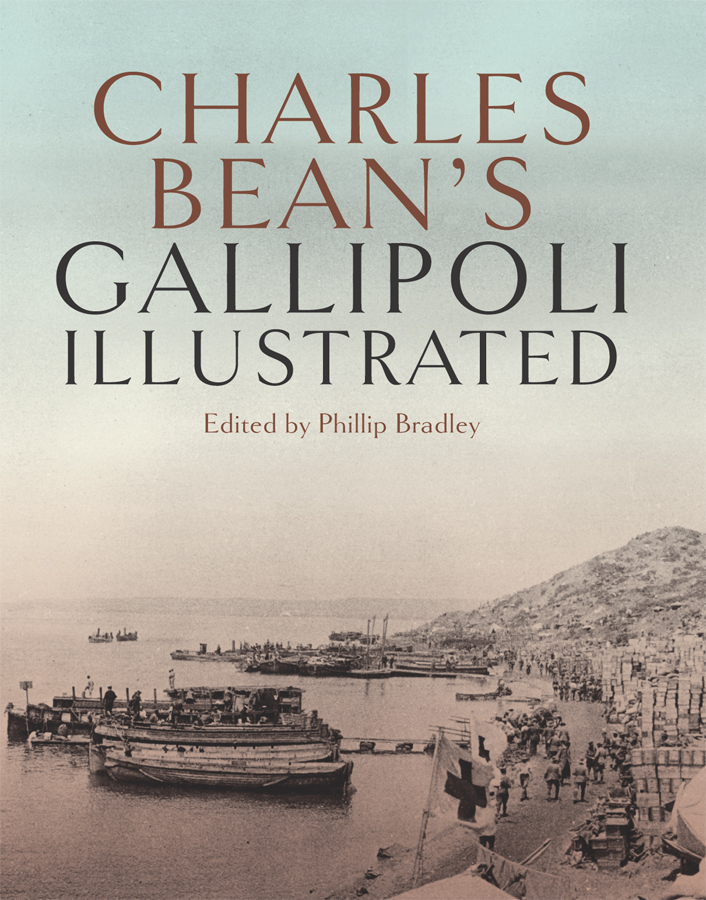C harles Bean and Gallipoli are foreverclosely bound. Serving as the officialAustralian war correspondent fromthe landing to the evacuation, Charles Beanwas able to dedicate his days and nights towitnessing and recording the events thatwould form the Anzac legend. In writing hisdiaries, Bean also provided an extraordinaryinsight into his own emotionshis joys andsorrows, hopes and fears, loves and hatesand those he admired or disdained, the heroesand villains of the Anzac story. Charles BeansGallipoli extracts the essence of Gallipolifrom his diaries and rewards the reader witha clearer understanding of what it was like tolive and die there.
Charles Beans Gallipoli also showcases aremarkable collection of photographs, themajority of which were obtained from theprivate collections of soldiers who took theircameras to war. Most of these photographs,selected to illustrate Charles Beans diaryextracts, have not previously been publishedand provide another fascinating perspectiveon the Gallipoli campaign.
Bombardier George Tothill on North Beach, December 1915. A makeshift pile driver is being used to help construct one of the evacuation piers. RAAHC Caddy collection 66Ba.
A man was watching some fellows being buried, with the parson by them. Poor buggers, he said.
Do you call them that? the padre saidI call them heroes.
Well we just calls em buggers, poor buggers!
Charles Bean, Diary 10, 8 July 1915
ABBREVIATIONS
| AAMC | Australian Army Medical Corps |
| ADC | aide-de-camp |
| AIF | Australian Imperial Force |
| AMC | Army Medical Corps |
| ANZAC | Australian and New Zealand Army Corps |
| Anzac | Anzac Cove sector or a soldier in the ANZAC (depending on usage) |
| ASC | Army Service Corps |
| BSA | Birmingham Small Arms |
| CMG | Companion of the Order of St Michael and St George |
| CO | commanding officer |
| DCM | Distinguished Conduct Medal |
| DHQ | Divisional Headquarters |
| DSO | Distinguished Service Order |
| FAB | Field Artillery Brigade |
| GHQ | General Headquarters |
| HMS | His Majestys Ship |
| HMT | His Majestys Transport |
| HQ | headquarters |
| MCMM | Maryborough Colonial and Military Museum |
| MEF | Mediterranean Expeditionary Force |
| MP | military police |
| NCO | non-commissioned officer |
| NZMR | New Zealand Mounted Rifles |
| OBE | Order of the British Empire |
| RAAHC | Royal Australian Artillery Historical Company |
| Rhodo | Rhododendron Ridge |
| VC | Victoria Cross |
The Gallipoli peninsula
The Anzac sector
INTRODUCTION
During the eight months the Anzacs were on the Gallipoli peninsula, many words were written by officers and men alike. One man, however, wrote more of the experience than any otherthe official Australian war correspondent, 35-year-old redhead Charles Edwin Woodrow Bean. As Australias official correspondent with the Australian Imperial Force he devoted all his time on Gallipoli to this task. He searched out the stories during the day and then, as he wrote from his cramped dugout on 2 June 1915, I sit up and write all night... and sleep in the morning. His search for the story of Anzac took him into the front lines and beyond, and his dedication to recording that story was remarkable. He was later chosen to write the official history of the campaign and produced two volumes of extraordinary detail, his work enhanced by a post-war visit to the peninsula and further correspondence with the participants. Charles Beans diaries and notes far and away provide the most comprehensive account of the Anzacs at Gallipoli.
Of greatest interest to me was how Charles Beans 21 diaries from Gallipoli reflected his own experience of the conflict. The diary extracts chosen for Charles Beans Gallipoli tell us as much about Charles Beans nature as they do about the nature of the fighting at Gallipoli. His early writing imparts a sense of excitement and wonder that gradually fades over the course of the campaign. In Beans later diaries covering the relentless killing on the battlefields of Belgium and France, as his spirit is blunted by continual exposure to the harsh realities of war, his prose soon drowns in a morass of detail.
In recent years it has become increasingly common for much of Australias military history to be classified as mythical. This is particularly true of the Australian Armys role in the Gallipoli campaign, and of Charles Beans viewpoint on it. Needless to say, but so important to consider, nobody else had the chance not only to live through the entire campaign, but then to immerse themselves in the Gallipoli story for so long. And no one could do so with such passion and with such a desire to honour the men who served as Charles Bean. He and other war correspondents such as Ellis Ashmead-Bartlett, an Englishman, certainly spread the Anzac legend and helped create its heroes, but there was a very good reason for that. The endurance of the Anzacs at Gallipoli was extraordinary and that is why they take such a prominent place in the Australian story. Bean saw all sides of that legend and, unlike Ashmead-Bartlett and some of the other war correspondents, he did so with a circumspect reserve based on painstakingly gathered facts of unmatched detail. The history Bean relates is no myth. I cant write about bayonet charges like some of the correspondents do, he wrote on 25 September 1915; one has some satisfaction in sticking to the truth in spite of the prejudice against it.
The detailed accounts that Bean transferred from his diaries and notes to the official histories led to later criticism, mainly from senior officers who felt their own contributions were more important to history than those of their men. Even today some refer to Beans approach to operational history as history from below, but complete history would be a better description of his work. Bean was even more assiduous in studying the command viewpoint and gave it the correct emphasis in his histories. Other operational histories written from above are simply incomplete or sanitised history, where the consequences of the command decisions on the men involved are not explored, but simply treated as a chess game where the fallen pawns do not bleed. Naturally enough, many commanders preferred it that way. Many writers as wellnone could ever approach the detail of Beans work both during and after the war. On a number of occasions he risked his own life and was even wounded in gathering that detail. On 27 April 1915 he wrote: You put your head up at your own risk, but the situation was interesting and well worth it.


